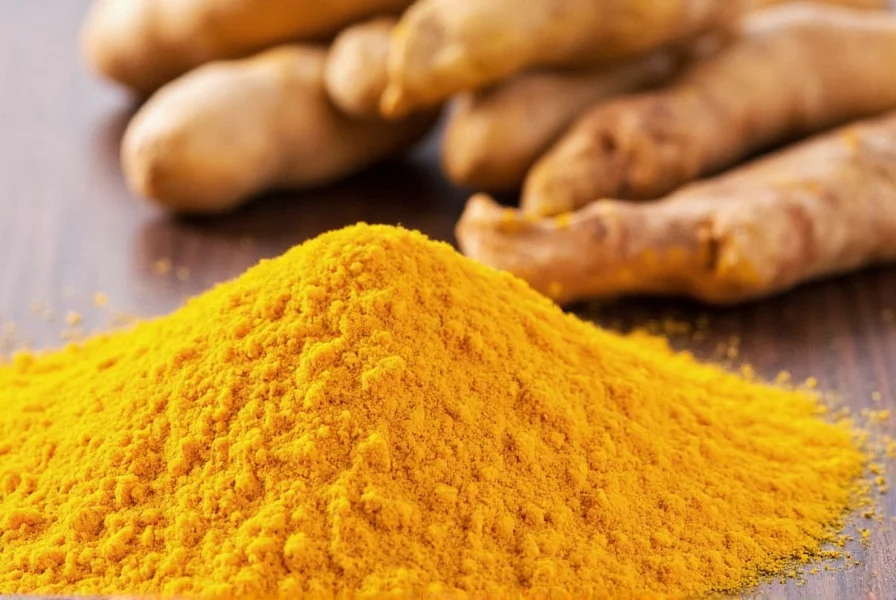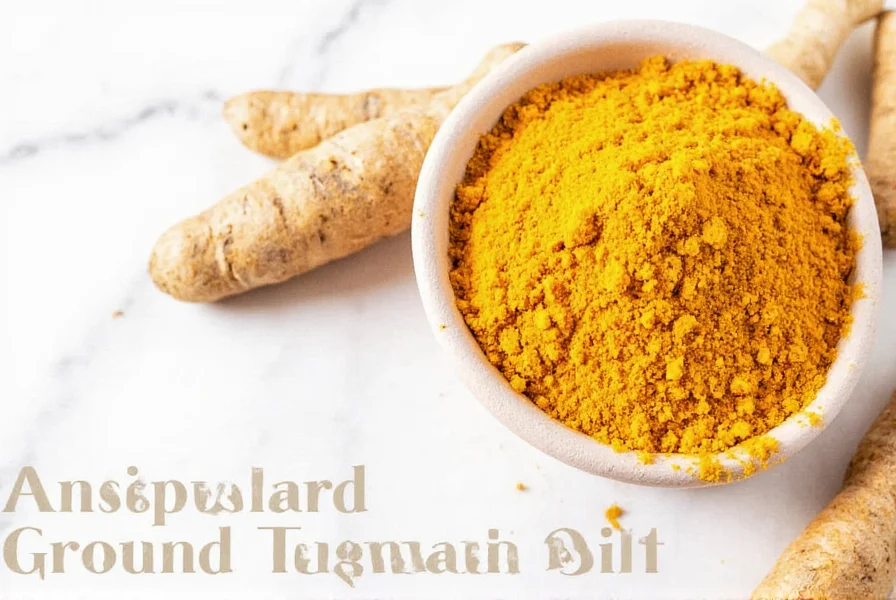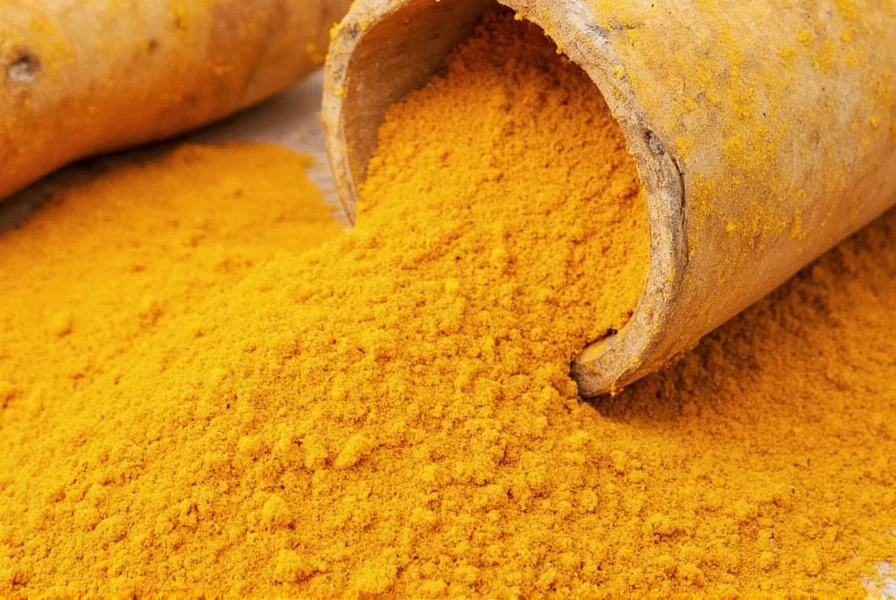Understanding the nuances of ground turmeric helps maximize its benefits in your kitchen and daily routine. This comprehensive guide explores everything you need to know about this golden spice, from its production process to practical usage tips.
What Exactly Is Ground Turmeric?
Ground turmeric originates from the rhizomes of Curcuma longa, a plant in the ginger family native to Southeast Asia. The harvesting process involves boiling fresh rhizomes, drying them in ovens or sunlight, then grinding them into a fine powder. This transformation concentrates the spice's flavor and color while extending its shelf life significantly compared to fresh turmeric root.
The distinctive yellow-orange hue comes from curcuminoids, with curcumin being the most studied compound. While fresh turmeric contains approximately 2-5% curcumin by weight, the drying process in ground turmeric can slightly increase this concentration through moisture reduction. However, the exact curcumin content varies based on growing conditions, processing methods, and storage duration.

Ground Turmeric vs. Fresh Turmeric: Key Differences
When considering difference between ground turmeric and fresh turmeric, several factors affect your choice for specific applications:
| Characteristic | Ground Turmeric | Fresh Turmeric |
|---|---|---|
| Flavor Profile | Earthier, more concentrated | Fresher, brighter, with citrus notes |
| Convenience | Ready to use, pantry staple | Requires peeling and grating |
| Shelf Life | 12-24 months properly stored | 2-3 weeks refrigerated |
| Curcumin Bioavailability | Higher concentration but requires fat for absorption | Naturally contains oils that enhance absorption |
Chefs often prefer fresh turmeric for raw applications like juices and salads where its brighter flavor shines, while ground turmeric excels in cooked dishes like curries, soups, and rice where its earthy notes develop during heating. For how to use ground turmeric in cooking, add it early in the cooking process to allow its flavors to fully integrate with other ingredients.
Nutritional Profile and Evidence-Based Benefits
According to USDA data, one teaspoon (2g) of ground turmeric contains:
- 6 calories
- 0.2g protein
- 0.1g fat
- 1.2g carbohydrate
- 0.3g fiber
- Significant manganese and iron
Research suggests potential health benefits associated with regular consumption of ground turmeric, particularly related to its curcumin content. Studies published in Nutrients journal indicate curcumin may support healthy inflammatory responses when consumed with black pepper (which contains piperine to enhance absorption). However, ground turmeric contains only about 3% curcumin by weight, so therapeutic effects typically require higher concentrations than culinary use provides.
When evaluating health benefits of ground turmeric powder, it's important to distinguish between culinary use and therapeutic supplementation. While regular inclusion in your diet contributes to overall wellness, ground turmeric alone shouldn't be considered a treatment for medical conditions.
Maximizing Culinary Applications
The warm, slightly bitter, earthy flavor of ground turmeric complements numerous dishes. For optimal flavor development in cooked applications:
- Bloom the spice in oil or ghee for 30-60 seconds before adding liquids
- Combine with complementary spices like cumin, coriander, and black pepper
- Add early in cooking for soups and stews to allow flavor integration
- Use in moderation—1/4 to 1/2 teaspoon per serving typically suffices
Popular culinary applications include:
- Curry powders and masalas
- Golden milk and wellness beverages
- Rice dishes and grain pilafs
- Roasted vegetable seasonings
- Marinades for proteins
- Homemade mustards and dressings
For those exploring culinary uses of turmeric spice, remember that its color can stain surfaces and fabrics. Using non-porous cutting boards and wearing an apron during preparation prevents unwanted yellow discoloration.
Proper Storage for Maximum Freshness
Understanding proper storage for ground turmeric preserves both flavor and potential health benefits. Exposure to light, heat, and moisture degrades curcumin content and diminishes flavor. Follow these storage guidelines:
- Store in an airtight container away from direct light
- Keep in a cool, dark cupboard (not above the stove)
- Avoid refrigeration which introduces moisture
- Buy in small quantities from high-turnover retailers
- Check for vibrant color—dull yellow indicates age
Ground turmeric gradually loses potency over time. While safe to consume beyond its peak freshness, its flavor and potential benefits diminish after 12-18 months. The does ground turmeric lose potency over time question has a definitive yes—proper storage slows but doesn't prevent this natural degradation.

Substitution Options When You Run Out
When you need ground turmeric substitution options, consider these alternatives based on your recipe's requirements:
- Fresh turmeric: Use 1 inch fresh root per 1/4 teaspoon ground (peel and mince finely)
- Curry powder: Substitute 1 teaspoon for 1/4 teaspoon turmeric (adjust for other spices present)
- Annatto: Provides color but minimal flavor similarity (use 1/8 teaspoon per 1/4 teaspoon turmeric)
- Saffron: Expensive but provides similar color (use 3-4 threads per 1/4 teaspoon turmeric)
Remember that no substitute perfectly replicates turmeric's unique flavor profile. For recipes where turmeric is the dominant spice, substitutions significantly alter the final dish. When exploring ground turmeric substitution options, consider whether you need primarily color, flavor, or both in your application.
Common Questions About Ground Turmeric
Frequently Asked Questions
How much ground turmeric equals fresh turmeric?
Generally, 1 inch of fresh turmeric root (peeled and minced) equals approximately 1/4 teaspoon of ground turmeric. The conversion isn't exact because fresh turmeric contains moisture, so the ground form is more concentrated. For recipes requiring precise measurements, use this ratio as a starting point and adjust to taste.
Does ground turmeric have the same health benefits as fresh?
Ground turmeric retains most beneficial compounds found in fresh turmeric, though some volatile oils are lost during drying. The curcumin content remains relatively stable, but fresh turmeric contains natural oils that may enhance curcumin absorption. For maximum benefits from either form, consume with black pepper and healthy fats to improve bioavailability.
Why does my ground turmeric taste bitter?
Bitterness in ground turmeric usually results from using too much, burning the spice during cooking, or using stale product. Turmeric has natural bitter compounds that become more pronounced when overheated. To prevent bitterness, bloom turmeric in oil for no more than 60 seconds, use recommended amounts (typically 1/4-1/2 teaspoon per serving), and ensure your spice is fresh with vibrant color.
Can I use expired ground turmeric?
Expired ground turmeric is generally safe to consume but loses flavor intensity and potential health benefits over time. Check for faded color (should be bright yellow-orange), weak aroma, or musty smell. If present, discard it. Properly stored turmeric maintains quality for 1-2 years past the 'best by' date, though potency gradually decreases. When in doubt, replace for optimal culinary results.
What's the best way to enhance turmeric absorption?
To maximize curcumin absorption from ground turmeric, combine it with black pepper (which contains piperine) and healthy fats like coconut oil or olive oil. Heating turmeric in fat for 10-15 minutes increases bioavailability. The recommended ratio is 1/4 teaspoon turmeric with a pinch of black pepper and 1-2 teaspoons of fat for optimal absorption of its beneficial compounds.











 浙公网安备
33010002000092号
浙公网安备
33010002000092号 浙B2-20120091-4
浙B2-20120091-4